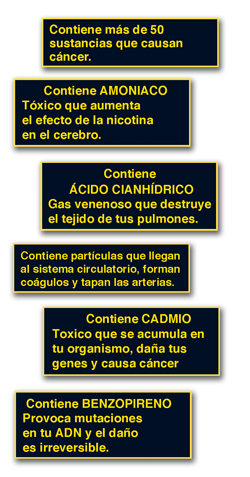U.S. halts changes to cigarette warning labels; other countries make changes based on Arnold School studies
November 16, 2011

A decision by a U.S. federal judge to halt putting graphic warning labels on cigarette packages next year goes against similar regulations in other countries, like Canada and Mexico.
Dr. Jim Thrasher of the Arnold School's Department of Health Promotion, Education, and Behavior leads research to assess the impact of cigarette warning labels used around the world. Working with colleagues from Mexico's National Institute of Public Health, Thrasher has conducted a variety of studies with adolescents and smokers throughout Mexico to determine the most effective imagery and text for that country's warning labels, which occupy 65 percent of the package.
They presented their findings earlier this year to Dr. José Angel Córdoba Villalobos, Mexico's Minister of Health, who unveiled the pictorial warnings in March. The new labels began appearing on cigarette packages in September.
"We worked with the Ministry of Health in Mexico to evaluate the country's warning label policy and to develop new warnings that could more effectively reduce tobacco use," said Thrasher, who has a joint research and professor appointment with Mexico's National Institute of Public Health.
"The Minister of Health accepted our recommendations, which involved a comprehensive assessment of different ways of communicating the magnitude of tobacco-related harms and the toxicity of tobacco," he said. "Every three months, two new pictorial warnings appear on cigarette packs. While Mexico and 38 other countries develop innovative variations of this public health intervention, the United States lags behind."
Thrasher and his research team are testing whether the same kinds of warnings have similar impacts among adolescents and adult smokers across countries as diverse as China, India, Bangladesh, South Korea, Guatemala, Honduras, Germany and the United States.
Kathleen Sebelius, the U.S. Health and Human Services secretary, announced in June that pictorial warning labels on cigarette packages would be introduced next year. "Nine new pictorial warnings were scheduled to go into effect in September 2012, but those changes will be delayed by the Nov. 9 injunction that resulted from tobacco industry litigation," Thrasher said.
The proposed U.S. warning labels would be the first change to cigarette package warnings in 25 years.
"These warnings can improve consumers´ understanding of the range and magnitude of health risks from smoking. Research in other countries consistently shows that warnings with imagery that illustrates the consequences of smoking does a better job than warnings with only text in increasing understanding of smoking risks, whether among smokers or youth," Thrasher said.
"Tobacco use continues to be the leading cause of preventable death in the United States, and graphic health warnings are among the most cost-effective interventions that exist," he said.
Thrasher´s research also focuses on selecting warning label content that works best among low socioeconomic status groups, in order to use this intervention to address tobacco-related health disparities. "There is an increasing concentration of smoking among populations with lower education, and our research suggests that they respond most strongly to warnings that are the most graphic," Thrasher said.
"People with low levels of health literacy are generally uninfluenced by text warnings, like those that have been in place for the last 25 years in the US," he said. "If this injunction is upheld, the United States will set an unconscionable precedent regarding the greater value it places on deadly commercial speech over public health."
Thrasher and his colleagues have been testing the impact of "plain" packaging that removes attractive design and brand elements of cigarette packaging. "Plain packaging reduces misperceptions about tobacco risks, enhances the effects of warnings, and makes tobacco products less appealing to consumers, especially youth," Thrasher said.
Their work is timely, as Australia will implement plain packaging in December 2012.
"Tobacco control is an international public health concern," he said. "The World Health Organization's Framework Convention on Tobacco Control is the first use of an international treaty address a public health issue. Mexico was the first country in the Americas to ratify the treaty and has made significant policy changes that have reduced tobacco use and saved lives.
"We know that the use of tobacco products won't go away completely. But the warning labels increase understanding of the range and magnitude of smoking-related risks, and this understanding is critical to addressing the tobacco epidemic," he said. "Our research is affecting policy changes that will have an impact around the world."



_01.jpg)